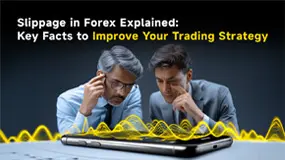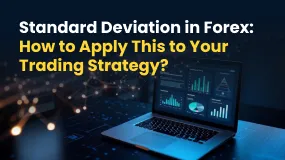简体中文
繁體中文
English
Pусский
日本語
ภาษาไทย
Tiếng Việt
Bahasa Indonesia
Español
हिन्दी
Filippiiniläinen
Français
Deutsch
Português
Türkçe
한국어
العربية
PICK A TRADING STRATEGY THAT WORKS FOR YOU.
Abstract:It is advisable to understand as much as you can about how financial markets operate, gather data on the assets of your choice, and eventually adopt some rules or discipline if you want to become a trader with a detailed strategy. A trading style serves as the foundation of your trading discipline. Find one that fits you by continuing to read.

It is advisable to understand as much as you can about how financial markets operate, gather data on the assets of your choice, and eventually adopt some rules or discipline if you want to become a trader with a detailed strategy. A trading style serves as the foundation of your trading discipline. Find one that fits you by continuing to read.
Here, we'll discuss the trading strategy: position trading, swing trading, day trading, and scalping. The duration of each deal is the primary distinction between them.
Why commit to one trading strategy when I can change it? Undoubtedly, you can change. But we advise you to obediently stick to yours. By doing so, you can prevent rash decisions and produce measured, predictable results. Let's finally discuss these tactics now.
Daily Trading. Your deals take up to a day in this style, as implied by the name. Let's imagine you wish to adjust your daily trading outcomes since you don't feel comfortable leaving your deals open overnight. Then you should try this look. Deal duration is larger than in scalping so that intraday trading strategies can be used, but it is still shorter than in swing trading.
Scalping. The fastest of all four. This trading strategy is based on an assumption that every trading instrument will complete the first stage of a movement. Whether you feel that it is going to be ascendant or descendant, choose buy or sell type of a deal. After the graph spiked, fix your profit immediately. This approach is very different from “let your profits run” and requires your trading sessions to be somewhat cautious and high-attentive. Using scalping as a primary trading style may be tricky, because, as mentioned before, constant chart control might cause fatigue. A scalper tends to use one-minute charts and instant executions of orders to keep the trading flow as close to real-time as possible.
Swing Investing If you have the patience to wait, swing trading may be the answer for you. However, if you don't have a tendency to ignore stop-losses. This type of deal should have a substantially larger stop-loss because large returns typically come with more risk. The same is true for a long period of time: before the price hits your take-profit, the trend may change numerous times from bullish to bearish.
Trading in positions. The most patient people should trade positions. Since trading might last for years, it is preferable to refer to it as investing. Your choices in this type of trading should be based on clear, long-term insights. Consider that you have a unique insight into the prognosis, you can start a short position on the USD because you believe the US economy would shortly enter a full-scale recession. It won't happen in a matter of seconds, hours, days, or perhaps even months. You wait patiently. If you get anxious every time the graph moves in the opposite direction of what you want, you should probably choose a shorter-term trading approach.
Conclusion
For comfortable trading, picking the appropriate trading approach is important. Trade in accordance with your risk appetite and pay attention to your thoughts. Extremely risky actions could lead to severe losses and rapid burnout. So, think about modifying your trading style to suit your personal pace of live.

Disclaimer:
The views in this article only represent the author's personal views, and do not constitute investment advice on this platform. This platform does not guarantee the accuracy, completeness and timeliness of the information in the article, and will not be liable for any loss caused by the use of or reliance on the information in the article.
Read more

A Guide to Determining the Optimum Forex Leverage
Want to gain a wider forex market position control by investing a minimal amount? Consider using leverage in forex. It implies using borrowed funds to raise your trading position more than your cash balance can let you do it. Forex traders usually employ leverage to churn out profits from relatively small currency pair price changes. However, there is a double-edged sword with leverage since it can multiply profits as well as losses. Therefore, using leverage in the right amount is key for traders. Forex market leverage can be 50:1 to 100:1 or more, which remains significantly greater than the 2: leverage usually offered in equities and 15:1 leverage in futures.

Slippage in Forex Explained: Key Facts to Improve Your Trading Strategy
Have you witnessed a difference between the expected price of a trade and the price at which it is executed in real time? This might be due to slippage, which can happen at any time. However, it prevails mostly when the market remains highly volatile. At the same time, it can also happen during large order executions. Read on to know more about slippage, its impacts, and the strategies to rein in adverse effects.

Forex Trading Account Types and Their Features: Read This Insightful Guide
Want to open a forex account to enjoy the thrill of compounding returns? You should first know the various forex trading account types. Choosing the right option from the list of forex accounts is critical to experiencing a hassle-free and successful trading journey. Forex brokers design trading accounts based on your needs, trading experience, and financial goals. Therefore, understanding each forex trading account type and its key features becomes essential.. This will help you make the right choice. In this article, we have discussed everything about forex accounts. Take a look!

Standard Deviation in Forex: How to Apply This to Your Trading Strategy?
Do you recall the concept of standard deviation being taught in your school days? The concept, which measures the variation within a set of data points relative to the mean average of the dataset. A greater standard deviation hints at higher variability. On the other hand, a lower standard deviation means lower variability from the mean. But what is standard deviation in forex, and how can you apply it to your trading strategy? This is what we will discuss here.
WikiFX Broker
Latest News
Stonefort Broker Review 2025: Legit or Risky? A Complete Analysis
Quantower Review 2025: User Reviews and Complaints in India
Uniglobe Markets Review 2025: A Safe Broker or a High-Risk Scam?
CHINA BEST Broker Review: Regulation and Risks
TD Markets Exposed: Price Manipulation, Withdrawal Issues & False Promises Hurt Traders
Bank of England holds rates steady in narrow vote ahead of Autumn Budget
BingX Review: Traders Angry Over Withdrawal Denials, Account Blocks & More
Chicago Fed's Goolsbee says he's cautious about further rate cuts during shutdown
These Are Europe's Top Economies By Projected 2026 GDP
Voices of the Golden Insight Award Jury | Tim Waterer, Chief Market Analyst of KCM Trade
Currency Calculator




